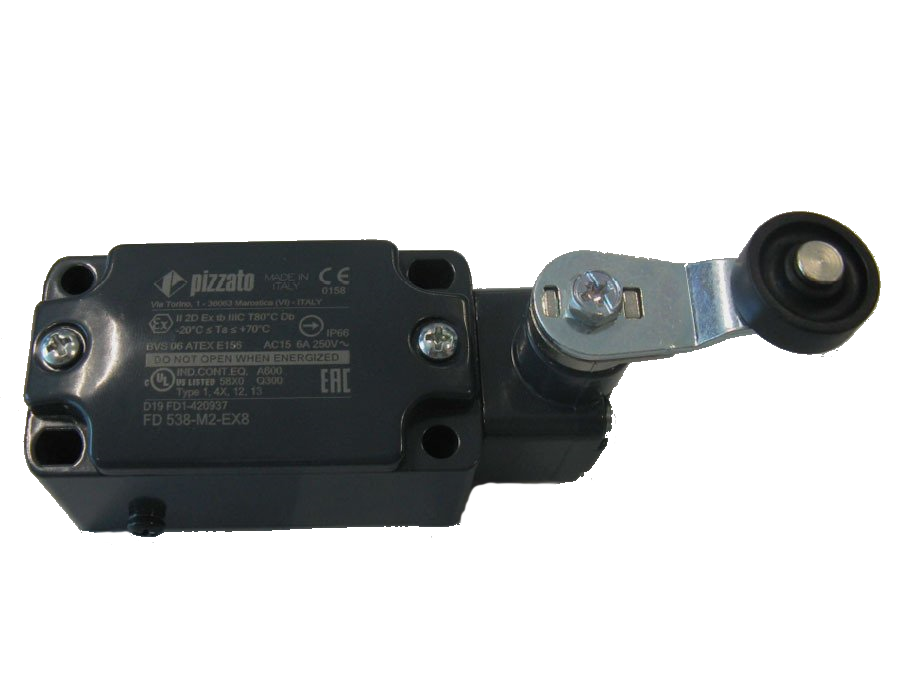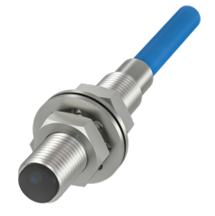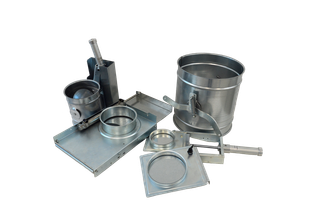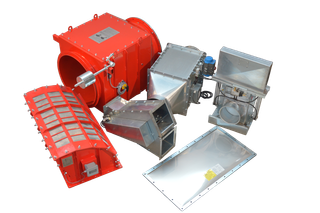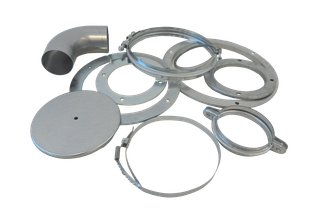AIRCOM sensor technology
The sensors we provide alongside our products are crucial for enhancing user experience, optimising performance, and providing valuable data for analysis and continuous improvement.
Sensors enable products to interact with the surrounding environment, collecting information on user behaviours, environmental conditions, and product performance. This data can be used to personalise user experience, improve energy efficiency, anticipate customer needs, and provide advanced features such as remote monitoring and automation.
POSITION SENSORS
Position sensors used in industrial environments are useful devices for identifying the spatial position of a given mechanical component and converting this information into an analogue or digital signal for subsequent processing. The sensors used by Aircom are divided based on the operating principle.
Contact Sensors
Contact sensors (or micro-switches) are used to identify the position of a body whether it is in position 1 (open) or 2 (closed). It exploits the contact of a lever on a moving/rotating body.
Inductive Sensors
Contact sensors (or micro-switches) are used to identify the position of a body whether it is in position 1 (open) or 2 (closed). It exploits the contact of a lever on a moving/rotating body.
Capacitive Sensors
Capacitive sensors are electronic transducers that provide an output signal when any solid or liquid material (wood, metal, plastic, water, alcohol, etc.) enters their sensitive area, even without necessarily coming into contact with it. They can be used for passage control, piece counting, level control for liquids or powdered and granular solids.
Magnetic Sensors
Proximity magnetic sensors are designed to detect the position of the piston in pneumatic cylinders. When they are exposed to the magnetic field produced by the piston magnet, the sensors close (if normally open) or open (if normally closed) an electrical circuit, generating a signal useful for directly controlling a solenoid valve or a PLC card. A yellow or red LED diode signals the switching of the sensor.
PNEUMATIC VALVES
Pneumatic valves are devices for controlling, regulating the start, stop, and direction, as well as the pressure and passage of a fluid coming from a compressor, vacuum pump, or from a pressurised accumulator or container.
The valves we provide on request alongside ours are for control. Controlling means influencing a specific function or quantity, in such a way as to start it, modify it, divert it, or cancel it.
Air flow is what usually needs to be influenced within an industrial suction system. In particular, the air flow is transferred to various users within the system and through a pneumatic valve, it is possible to determine in which direction to convey the air.
The control of a pneumatic valve is carried out through an actuating element, which can be manual, mechanical, electric, hydraulic, or pneumatic.
Manual Monostable Valves 5/2
A monostable 5/2 (5-way and 2-position) solenoid valve has a balanced position that corresponds to the rest position, i.e., not powered. When powered, it activates by moving to the second position, and when power is cut off, it returns to the rest position.
Manual-operated valves are directional control valves that are actuated (opened or closed) via a manual lever. They do not require electrical power but need to be connected to the pneumatic line of the structure.
Electric Monostable Valves 5/2
A monostable 5/2 (5-way and 2-position) solenoid valve has a balanced position that corresponds to the rest position, i.e., not powered. When powered, it activates by moving to the second position, and when power is cut off, it returns to the rest position.
Electrically operated valves are directional control valves that are actuated (opened or closed) via an electrical current. Also, they must be connected to the pneumatic line of the structure.
Electric Bistable Valves 5/2
A bistable 5/2 (5-way and 2-position) solenoid valve has both positions that are balanced. Therefore, when a valve is powered, it reverses the position it was in and maintains the new configuration, even when power is cut off.
Electrically operated valves are directional control valves that are actuated (opened or closed) via an electrical current. Also, they must be connected to the pneumatic line of the structure.
Actuation Control for Solenoid Valves
The actuation control, in the case of a solenoid valve, consists of an electrical current that, by generating a magnetic field through a solenoid, causes the movement of a ferrous metal rod, which acts by changing the position of the valve.
We provide various control models depending on the control requirement or the type of application (if it is necessary to comply with CE directives 2014/34/eu).
Below are the different voltage availabilities listed:
- 24, 110, 220 V AC
- 24 V DC
Didn't find what you're looking for?
Discover our product line for the daily operation of the system
If you haven't found what you're looking for yet, don't hesitate to contact us!!
Headquarters
Opening hours
- Mon - Fri
- - -
- Sat - Sun
- Closed






